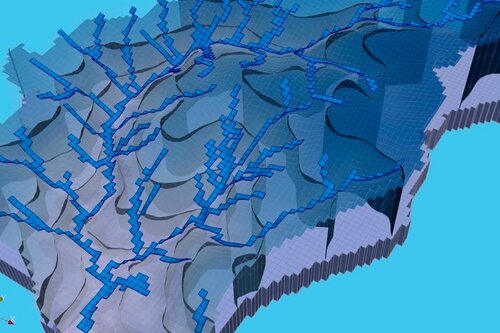Objectives
The development of this course is to guide the students to understand the concepts of and follow the complete procedures of regional groundwater modelling using model tools and functions provided in the GUIs. In this course the student will learn:
- Concepts of groundwater flow modelling
- ModelMuse environment and tools for modelling.
- Flopy environment and tools for modelling
- Conceptualization, grid design, boundary conditions and MODFLOW packages
- ·Model result analysis and visualization
- Model calibration
Course content
Session 1
- Introduction to the environment of ModelMuse
- Building a regional model
- Define model area and active zone
- Model layers and spatial discretization
- Import external data
- Assign boundary conditions and hydraulic parameters.
Session 2
- Application of the MODFLOW packages - DRN, RCH and EVT
- Using global variables to assign model parameters
- Using graphical objects and external shapefiles to apply model parameters and boundary conditions
- Input observations
Session 3
- Analysis of the groundwater balance.
- Comparison of simulated - observed hydraulic heads.
- Visualization of results in ModelMuse
- Introduction to the environment of Flopy
- Construct the model in Flopy
Session 4
- Building another regional model.
- Application of the MODFLOW packages - DRN, RCH, EVT, and GHB.
- Using global variables to assign model parameters.
- Using graphical objects and external shapefiles to apply model parameters and boundary conditions.
- Model visualization.
Session 5
- Calibration of a regional model
- Insert piezometers
- Simulation of the model
- Water balance analysis
- Analysis of model convergence.
- Adjustment of parameters according to physical considerations
Session 6
- Optimizing the regional model
- Comparison of observed and simulated data
- Analysis of calibration statistics with Flopy
- Analysis of water levels.
- Visualization and analysis of water balance of the calibrated model.
Methodology
Here are some details of each methodology:
- Manuals and files for the exercises will be delivered.
- The course will be developed by videos on private web platform.
- There is online support for questions regarding the exercises developed in the course.
- Digital certificate available at the end of the course.
- Video of the classes will be available for 2 months.
- To receive the digital certificate you must submit the exams after 1 month
